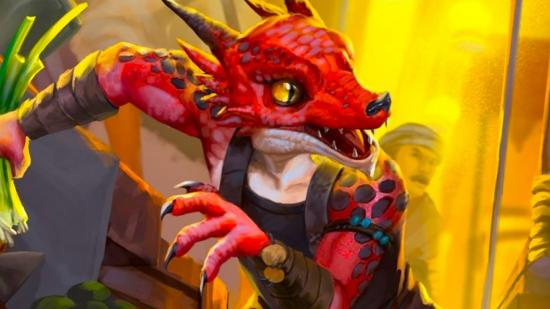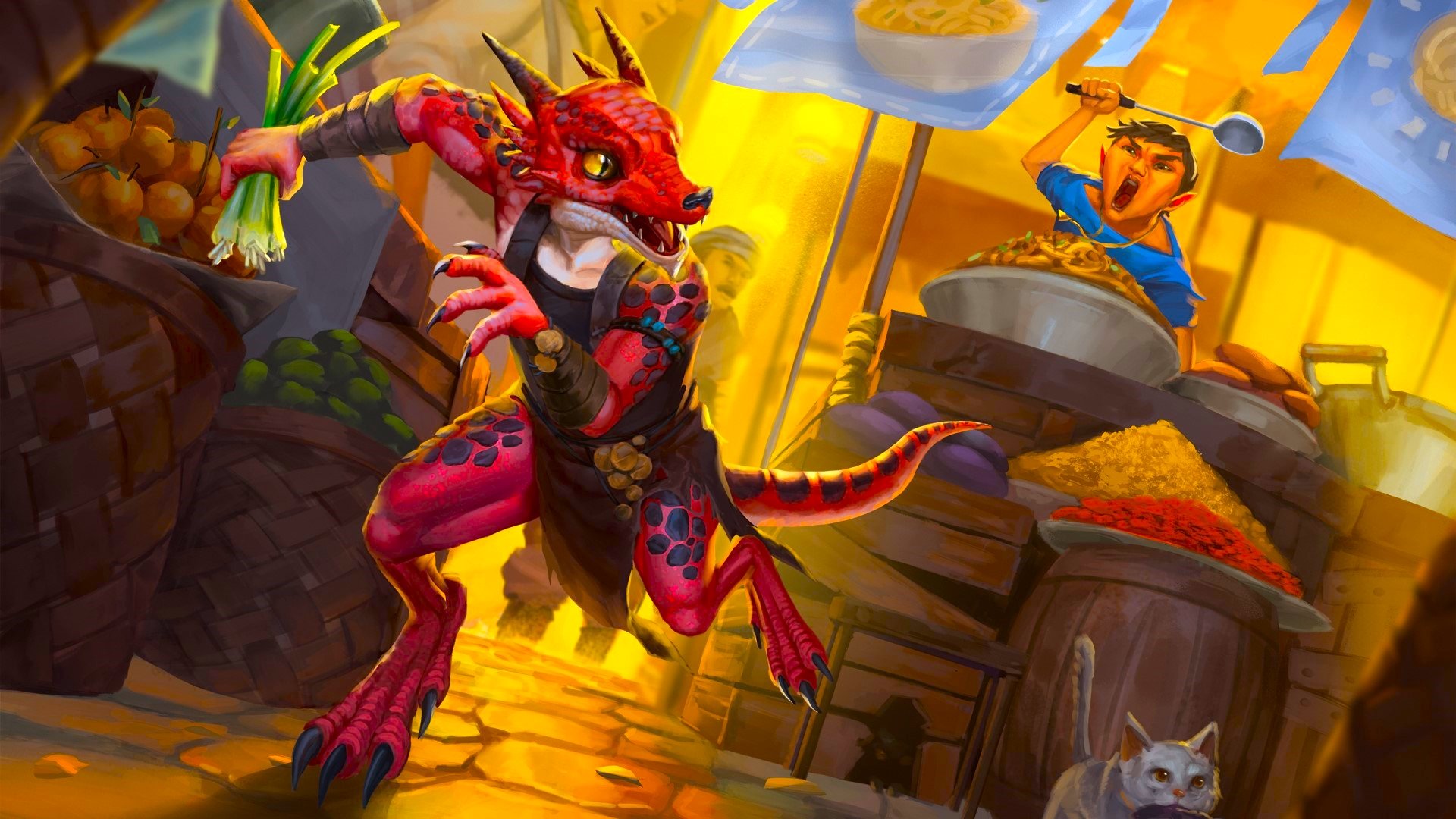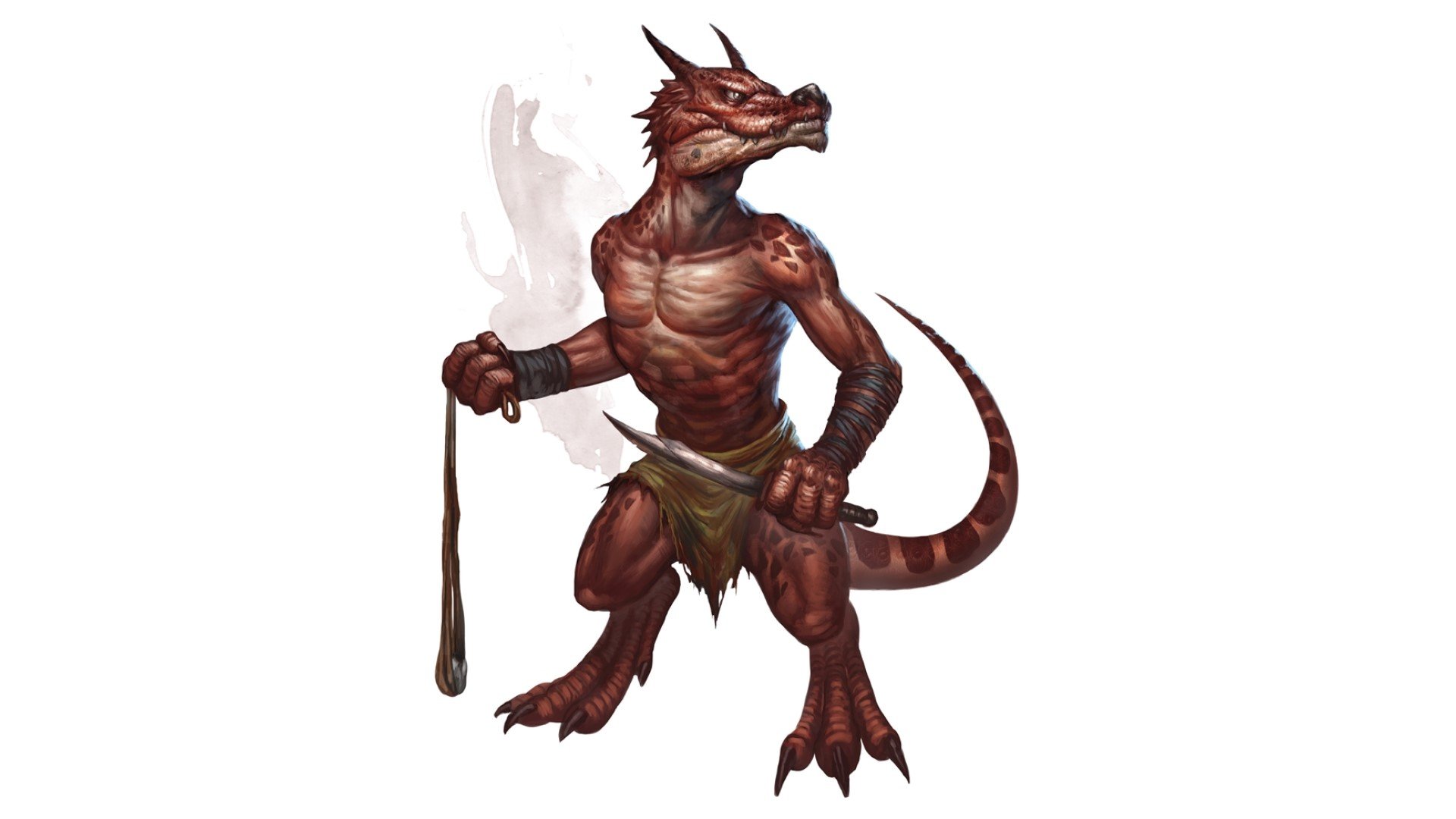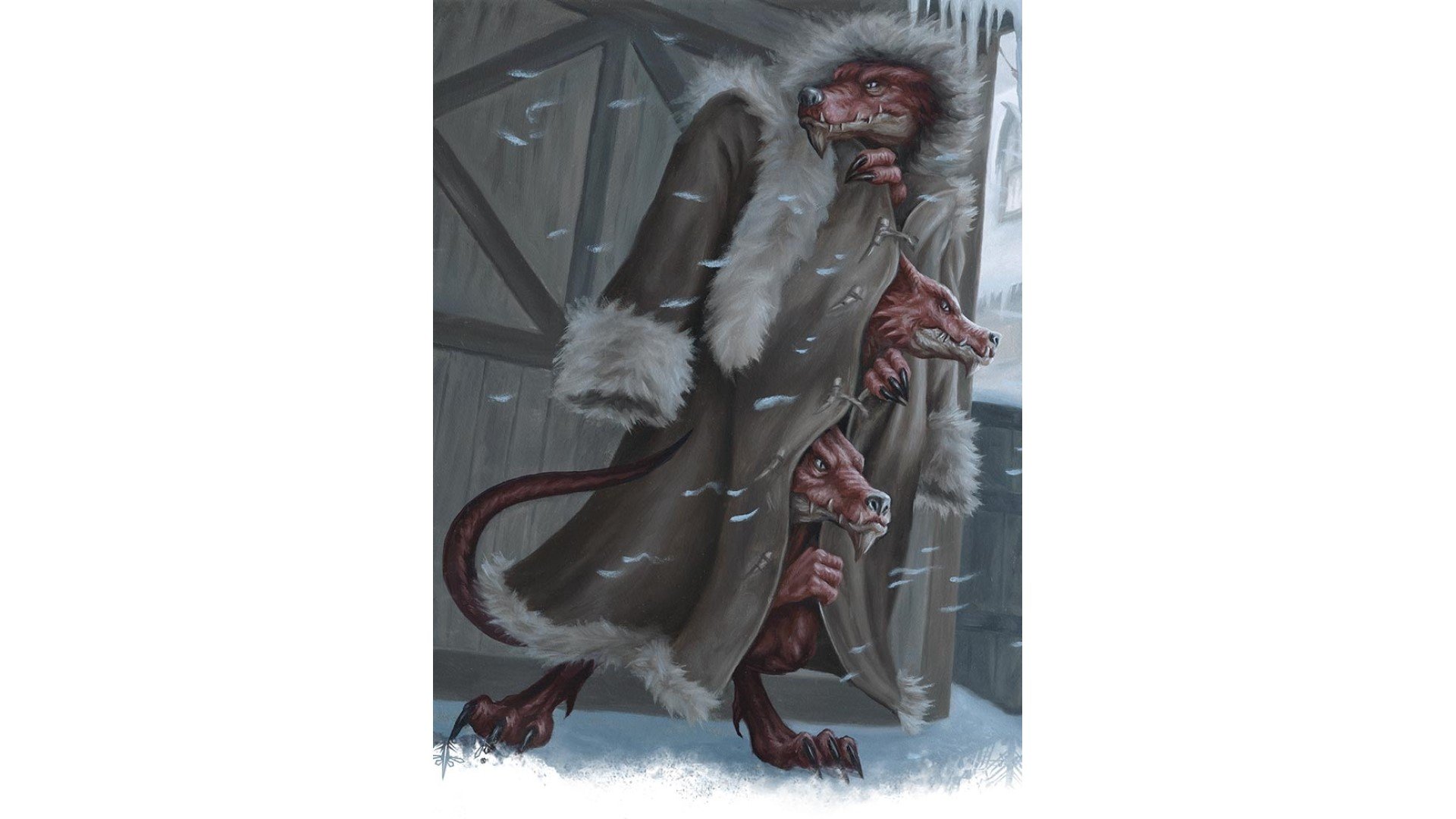Despite their history as conniving tricksters, the DnD Kobold 5e race is a well-loved member of the world of D&D. A race of small, reptilian humanoids, the 5e Kobold are well known for their trap-making, tunnelling, and treasure-hoarding talents. They live in large communities, and they can often be found living underground or in your typical TTRPG dungeon.
Kobolds have come a long way since their introduction in the original 1977 Monster Manual. No longer simple minions to evil DnD dragons, you can now find Kobolds of all DnD alignments and motives peppered through the Forgotten Realms DnD setting. You can even choose a Kobold as one of the playable DnD races (or, yes, if you really like, three Kobolds in a trench coat). Simply choose your DnD classes and DnD backgrounds, then get going.
This guide is designed to provide all the essential information on Kobolds. Whether you want them in your game as early enemies or friendly NPCs, we’ve covered all the DnD stats you need to get started. You’ll also find the most recent tips on creating a Kobold 5e character below – so that you can start living out your tiny tinkering lizard person dreams.
Kobold 5e monster
Looking for DnD monsters for a combat encounter? Here are the stats for a Kobold 5e monster:
| Armour class | 12 |
| Hit points | 5 (2d6 -2) |
| Speed | 30ft |
| Strength | 7 (-2) |
| Dexterity | 15 (+2) |
| Constitution | 9 (-1) |
| Intelligence | 8 (-1) |
| Wisdom | 7 (-2) |
| Charisma | 8 (-1) |
| Challenge rating | 1/8 (25XP) |
| Proficiency bonus | +2 |
In the Monster Manual, Kobolds are assumed to be Lawful Evil, and they’re described as the minions of evil dragons. Most are flightless, and those that worship the Kobold god Kurtulmak are generally seen as humourless treasure-hoarders.
All of them do share two traits as part of their stats, though. The first is Sunlight Sensitivity – an unpleasant trait that gives Kobolds disadvantage on attack rolls and Wisdom Perception checks that rely on sight whenever they are in sunlight. The second trait is the slightly kinder Pack Tactics trait. This gives Kobolds advantage on attack rolls if an ally (who isn’t incapacitated) is within five feet of the target.
Kobolds also have Darkvision for 60ft and a Passive Perception of eight. They speak Common and Draconic as their base languages, and they can attack with either a Dagger or a Sling as their DnD weapons of choice.
Kobold race 5e
Some of the features of the Kobold creature remain the same once they become a playable race. You’re still a small humanoid, and your speed and darkvision remain the same.
The major change is to the Kobold’s racial traits. (Bear in mind the traits shared here are based on the most recent changes to Kobolds in Monsters of the Multiverse – if you’ve still got a copy of Volo’s Guide to Monsters, your Kobold’s features will look quite different.)
Firstly, Wizards of the Coast has done away with the Kobolds’ Sunlight Sensitivity and Pack Tactics traits. In their place are Draconic Cry and Kobold Legacy. Draconic Cry lets you release a shout at enemies ten feet in front of you – this shouting match gives you and your pals advantage on attack rolls against any enemies that heard you.
Kobold Legacy gives you several potential character options based on their ancestral connection to dragons. You can choose one of the following perks:
- Craftiness – Proficiency in DnD skills Arcana, Medicine, Investigation, Survival, or Sleight of Hand
- Defiance – Advantage on saving throws to avoid or stop yourself from being frightened
- Draconic Sorcery – Choose a cantrip from the Sorcerer 5e spell list, with Intelligence, Wisdom, or Charisma as your spellcasting ability
Because you’re playing a character, you’ll have more control over your Kobold’s ability scores. Being a member of a ‘fantastical race’ means you can increase one ability score by two and another by one, or you can increase three different scores by one when building your character.
Monsters of the Multiverse also doesn’t assume your Kobold speaks Draconic. You speak Common, but you can now choose another appropriate language.
Best Kobold 5e classes
The Kobold’s flexible ability scores and varied Kobold Legacy perks make it a great option for a range of classes. Barbarian is perhaps your worst option due to the Kobold’s size limitations, plus the Barbarian’s Reckless Attack makes Draconic Cry less appealing.
Melee fighting classes are often a great choice for Kobolds thanks to the short range of their Draconic Cry. A DnD Fighter or DnD Rogue are some of the best options, as they benefit from pretty much any of the Kobold Legacy options. Rogues can get a lot out of Draconic Cry’s combat advantage, and Fighters that go down the Eldritch Knight path will find Draconic Sorcery’s extra skills appealing.
Draconic Sorcery can provide extra options for any spellcaster who didn’t have access to Sorcerer spells before. DnD Paladins are probably the best option here, as they can make the most of the melee benefits of Draconic Cry and the race’s spellcasting options.



